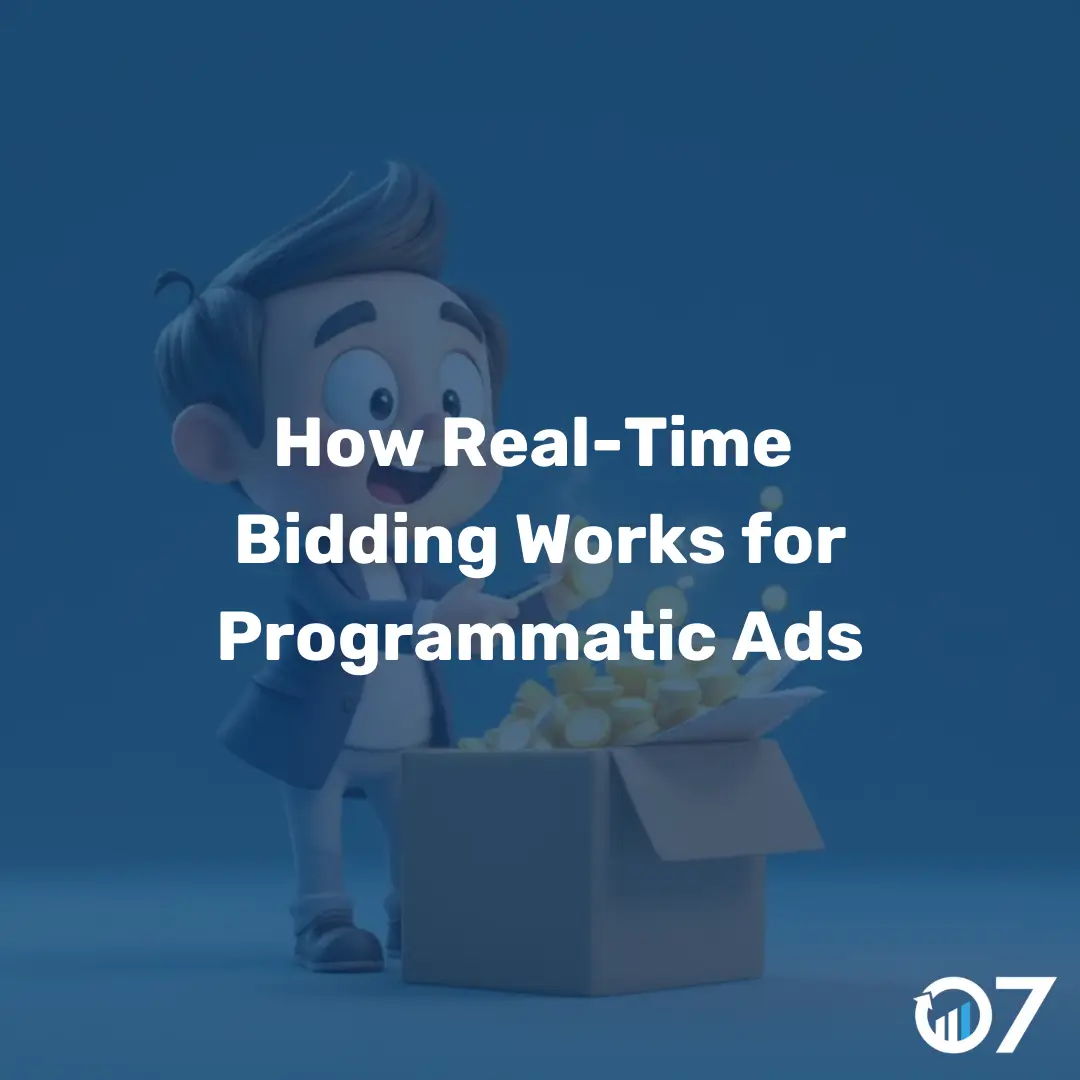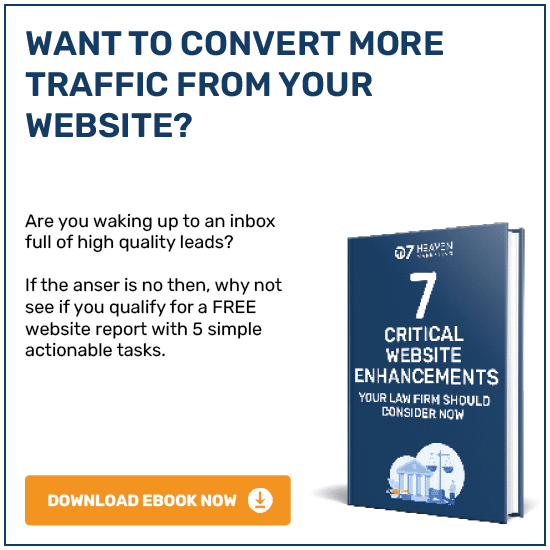How real-time bidding works can transform your ad strategy, making it more efficient and cost-effective. Understanding this process can help you optimise your online ad purchases.
Real-time bidding (RTB) is one of the most efficient ways to buy ad inventory online. It automates the buying process, saving you time and money. However, even experienced marketers can find RTB confusing. This article will break down how real-time bidding works, its benefits, and its challenges in plain English.
In traditional media buying, you have to buy ads manually. For example, if you find a magazine that suits your buyer persona, you ask for a media kit. You then choose ad dimensions that fit your budget and buy the ad for a set period. Once the time runs out, the ad is taken down.
Real-time bidding eliminates most of that work. With RTB, a Demand-Side Platform (DSP) automatically chooses the best publishers and ad spaces, then bids on them for you. You set targeting parameters like maximum bid price and target audience. The DSP uses these parameters to decide where your ads are placed.
If you place the highest bid, the publisher accepts your ad automatically. Real-time bidding handles all the bidding, so you don’t have to take any additional steps.
Mandar Ambekar, founder and managing director of blueShepherd GmbH, explains, “The Real-Time Bidding process is like an auction, but it happens in the time it takes for a webpage to load. Advertisers compete to display their ads to a specific audience based on criteria like age, interests, or browsing behaviour. The highest bidder wins, and their ad appears on the user’s screen.”
Real-time bidding is the driving force behind most programmatic advertising campaigns. Advertisers can buy ad inventory, place those ads online, and ensure they get a certain number of impressions with their programmatic advertising campaigns.
Still confused? No worries. Let’s break down the concept of RTB and programmatic advertising further.
Real-Time Bidding Terms to Know
Before diving deeper into how real-time bidding works, let’s understand some key terms involved in the process.
- Advertiser: The company or brand that wants to place an ad online.
- Demand-Side Platform (DSP): The service advertisers use to launch their ad campaigns.
- Publisher: The website or online property that wants to sell ad space, often referred to as “ad inventory.”
- Supply-Side Platform (SSP): The service that publishers use to make their ad inventory available. SSPs use ad exchanges to run auctions where ad spaces are instantly purchased by the highest bidder.
- Ad Exchanges: The marketplace connecting advertisers with publishers. Ad exchanges carry out the bidding transaction automatically in real time.
- Impressions: The number of times an ad is seen or scrolled past. Advertisers pay per thousand impressions, known as the cost per mille (CPM).
How Does Real-Time Bidding Work?
Here’s a step-by-step guide on how real-time bidding works from both the advertiser’s and publisher’s perspectives.
Setting Up an Ad Campaign as an Advertiser
Marketers use DSPs to set up ad campaigns and track their performance. To determine what ad inventory to bid on, advertisers set targeting parameters.
For instance, a brand may only want to target users in a specific region or who have visited their website recently.
There are many tools that marketers can use to develop effective ads. For example, AI tools can quickly produce video advertisements and create tailored headlines for any target audience.
Once the ad is crafted and the campaign is set up, the advertiser’s DSP evaluates ad potential in real time. The DSP then decides whether or not to place a bid and how much to bid on a given ad space.
Listing Ad Inventory As a Publisher
Publishers use SSPs to list their ad inventory and the prices they charge. When creating these listings, they include key information that DSPs will be looking for to evaluate whether a specific ad space is a good fit for their target market. This includes the type of content on their webpage and the types of ad space available.
Meeting in the Middle at the Ad Exchange
The advertiser and publisher meet in the middle at the ad exchange, where the real-time bidding takes place. Advertisers set their bid through their DSP, while the publisher’s SSP either accepts or rejects the bid. Prices are negotiated based on CPM, so the advertiser isn’t paying based on uptime or ad dimensions but for the number of times their ad is seen.
Still confused? Let’s go through a real-world example to illustrate what real-time bidding can look like in action.
Real-Time Bidding Example
Let’s say I’m the marketing manager for Silk, a UK-based beauty brand that just launched a new brow line. I set up the ad campaign on a DSP where I specify that I want to target users who regularly shop for makeup products, who are located in the Manchester area, and who are between 18 and 30 years old. I also note that I only want my ads shown on sites related to beauty and lifestyle.
What happens next? A user visits a publisher’s site, and the publisher’s SSP sends a bid request to the ad exchange. Then, my DSP evaluates the impression’s value. The DSP determines whether the user meets the parameters outlined in my campaign, and if they do, the DSP submits a bid.
Not every bid is a winner. But if Silk has the winning bid, then once the page loads, the user will see my ad, and Silk will pay the cost associated with the bid.
This process happens thousands of times on different web pages over the course of Silk’s ad campaign. Silk’s paid ads manager will then monitor the ad’s performance on the DSP to see whether the ad is reaching the desired audience or if the parameters should be adjusted.
How Much Does Real-Time Bidding Cost?
The cost of real-time bidding for programmatic ads varies based on your unique use case. Remember, the price of an RTB campaign is measured by CPM.
The CPM for a given ad campaign will change based on who your target market is, the budget you’ve allocated, and how long the campaign will run.
If you’re looking to reduce costs, you can adjust these factors to be more limited. Conversely, if you have more budget available, you can explore opportunities to expand these factors.
Generally, the CPM for a campaign targeting a niche audience will be higher than that of a campaign targeting a broader audience. There are substantial advantages to targeting a more niche user base. However, if you’re looking to reduce the cost per impression, broadening the audience may be helpful.
How to Measure the Success of Real-Time Bidding Ads
Measuring the success of your RTB campaigns is crucial. Several metrics can help you gauge how well a campaign is working.
On the most basic level, start by measuring impressions. Impressions are the easiest metric to track. However, just because someone sees your ad doesn’t mean they click through to visit your website or buy your product.
Click-through rate is another important factor: How often are the people who see your ad actually clicking on it?
Beyond impressions and click-throughs, explore more nuanced measures of user engagement. For example, how long do users stay on your website? How many pages are they visiting, and which pages are they spending the longest on?
Tracking metrics like these can help you get a more detailed view of the actual quality level of the leads you’re paying for.
Finally, zoom out and look at bigger-picture measures of success. What is the ROI of the overall campaign? What percentage of ad impressions convert into purchases? How loyal are these customers once they convert? Do they buy once and then churn, or do they become lifelong evangelists of your brand?
Accurately measuring success is no simple task. Factoring in a range of metrics and considerations can help ensure that you invest your ad money as effectively as possible.
Real-Time Bidding Platforms
Now that you know how real-time bidding works and how to measure success, let’s look at some tools to help you get started with programmatic ads.
Real-Time Bidding Platforms for Advertisers
As an advertiser, you’ll want to find a DSP that allows you to manage several ad campaigns at once. Look for a DSP that lets you set specific targeting parameters, such as users’ most-visited websites and preferred brands.
Here are a few options:
- AdRoll: This simple self-serve DSP is a good fit for beginners in the programmatic advertising space.
- mediasmart: This more advanced self-serve DSP offers detailed targeting and segmentation capabilities. It’s a good fit for more experienced marketers who have already set up ad campaigns with other tools.
- theTradeDesk: This DSP allows you to place ads on multiple devices, including TV ad rolls, online videos, music streaming devices, mobile apps, and publishers across the web. It’s a good fit for marketers planning to advertise across all these channels.
Real-Time Bidding Platforms for Publishers
If you have ad inventory to sell, signing up with an SSP is essential to take advantage of real-time bidding. With an SSP, you don’t have to speak with any advertisers or do any manual work associated with account management.
Here are a few supply-side channels that can help publishers sell ad inventory through real-time bidding:
- Magnite: This SSP is best for large-scale ad inventory sellers who also want to sell ad space through Private Marketplace (PMP) and Programmatic Guaranteed (PG) systems. It’s a good fit if you’re an experienced ad seller who wants to upgrade to a more capable system.
- Index Exchange: This simpler supply-side marketplace allows you to get started with selling ad inventory on multiple channels, including display, video, mobile, and native. It’s a good fit for publishers who would like to start selling ad inventory or who plan to take advantage of all these available channels.
Still not sure if buying or selling programmatic ads through real-time bidding is right for you? Below, we’ll go over some of the most important pros and cons to keep in mind when deciding whether to invest in RTB.
Real-Time Bidding Pros
Better Tracking
Real-time bidding provides marketers with real-time insights and the ability to adjust campaigns on the fly. This ensures advertisers can optimise their ads to reach the right audience at the right time, thereby reducing wasted impressions.
With RTB, advertisers can monitor their campaigns easily without relying on vendors. No need to reach out to multiple publishers and ask for reports — you can get all the data you need yourself on your DSP.
This also gives marketers the agility to pivot quickly if their campaign isn’t performing as expected. For instance, you might find that switching out one keyword for another may boost your campaign’s performance and align better with the audience you want to reach.
Real-time bidding with programmatic advertising enables you to track your campaigns and easily identify opportunities for improvement.
Better Targeting
When purchasing ads through RTB, you buy one impression at a time. This means every time a website visitor or mobile app user visits a publisher’s site, you get the chance to assess that person’s profile and see whether it matches your target audience. This makes for more accurate targeting, as you can ensure your ads only reach the right people at the right time.
RTB has a clear edge compared to traditional forms of media buying. The performance of RTB is better since you are going contextual and targeting the most relevant audience sets.
More Cost-Effective
One recent report found that, on average, programmatic ads cost up to 20 times less per impression than traditional ads. The precision of real-time bidding allows marketers to spend their ad dollars on higher-value impressions.
Too often, brands launch marketing campaigns that reach their target market occasionally, leaving much of their budget wasted on users who don’t fit the brand’s profile. RTB enables marketers to ensure that every cent goes toward targeting users who are likely to be interested in the brand.
RTB takes much of the manual labour out of the online advertising process, allowing marketers to focus on other efforts. You can also complement your RTB efforts by leveraging a media planning template to track and organise your media planning. With tools like these, marketing teams can get more bang for their buck, prioritising high-value work.
Real-Time Bidding Cons
Compromised Brand Safety
Despite the many benefits of RTB and programmatic advertising, real-time bidding has real shortcomings to consider. Where your ad shows up is just as important as who sees it. Consumers judge brands based on the content surrounding their ads.
A recent survey found that 71% of U.S. consumers report that they would feel less favourably toward a brand if it advertises near inappropriate content, and 56% would be unlikely to engage with an ad that appeared near inappropriate content. This can be anything from a site that hosts pirated movies to a blog that promotes hate speech.
Due to the nature of RTB, there is a risk your ad may appear on a site with content you wouldn’t want your brand associated with. To mitigate this risk, marketers can put certain keywords and sites on a “deny” list. However, because RTB systems place ads automatically, there is no way to fully guarantee that your ad will never be placed next to unsavoury content.
Potential Ad Fraud
It’s critical to be aware of potential ad fraud. Ad fraud happens when scammers try to trick digital ad networks by falsifying impressions and clicks using bots. Bots aren’t real people — so they aren’t potential buyers you can eventually convert into customers. Because you don’t get to hand-pick publishers when you use real-time bidding, there’s a very real chance that your ad might be seen by bots instead of real people.
The rising sophistication of bots can also cause brands to gather inaccurate data on their campaigns, mistaking impressions or clicks by bots for real, human traction. This form of fraud may happen without publishers’ knowledge, but some deceitful publishers fabricate impressions knowingly to steal from advertisers. One way to combat this is by using a DSP or ad network with fraud detection software. However, even if you take reasonable precautions, this risk is always going to be present.
Conclusion How Real-Time Bidding Works
Real-time bidding makes the online advertisement process fast and easy. While it’s not without risks, RTB and programmatic advertising mean marketers can skip the back-and-forth previously associated with ad buying and focus instead on tracking the results.
Understanding how real-time bidding works can help you optimise your ad campaigns, making them more efficient and cost-effective. If you want to learn more about how real-time bidding works, visit our blog or contact us via email at info@07hm.co.uk or telephone 01702 410663.





